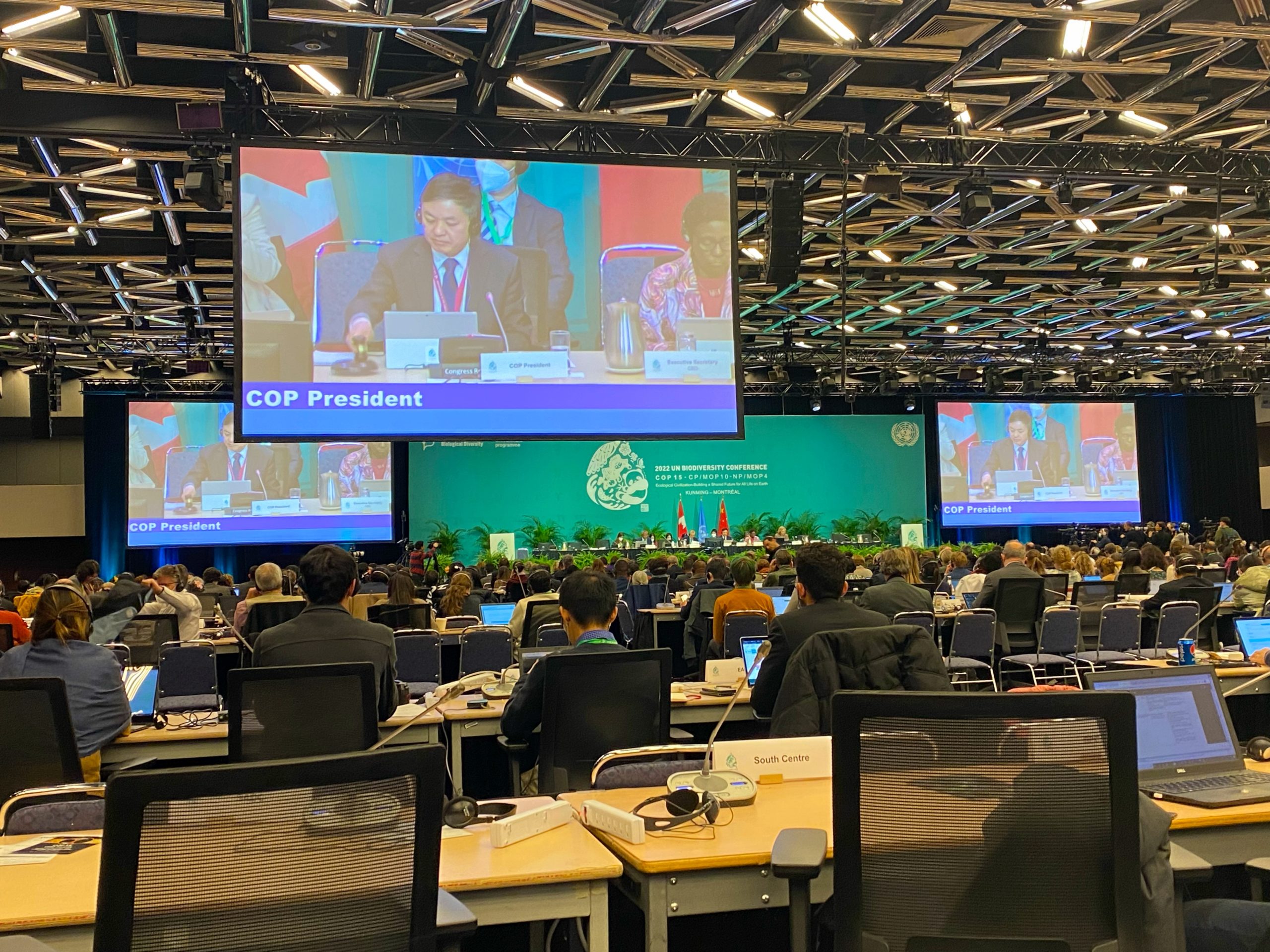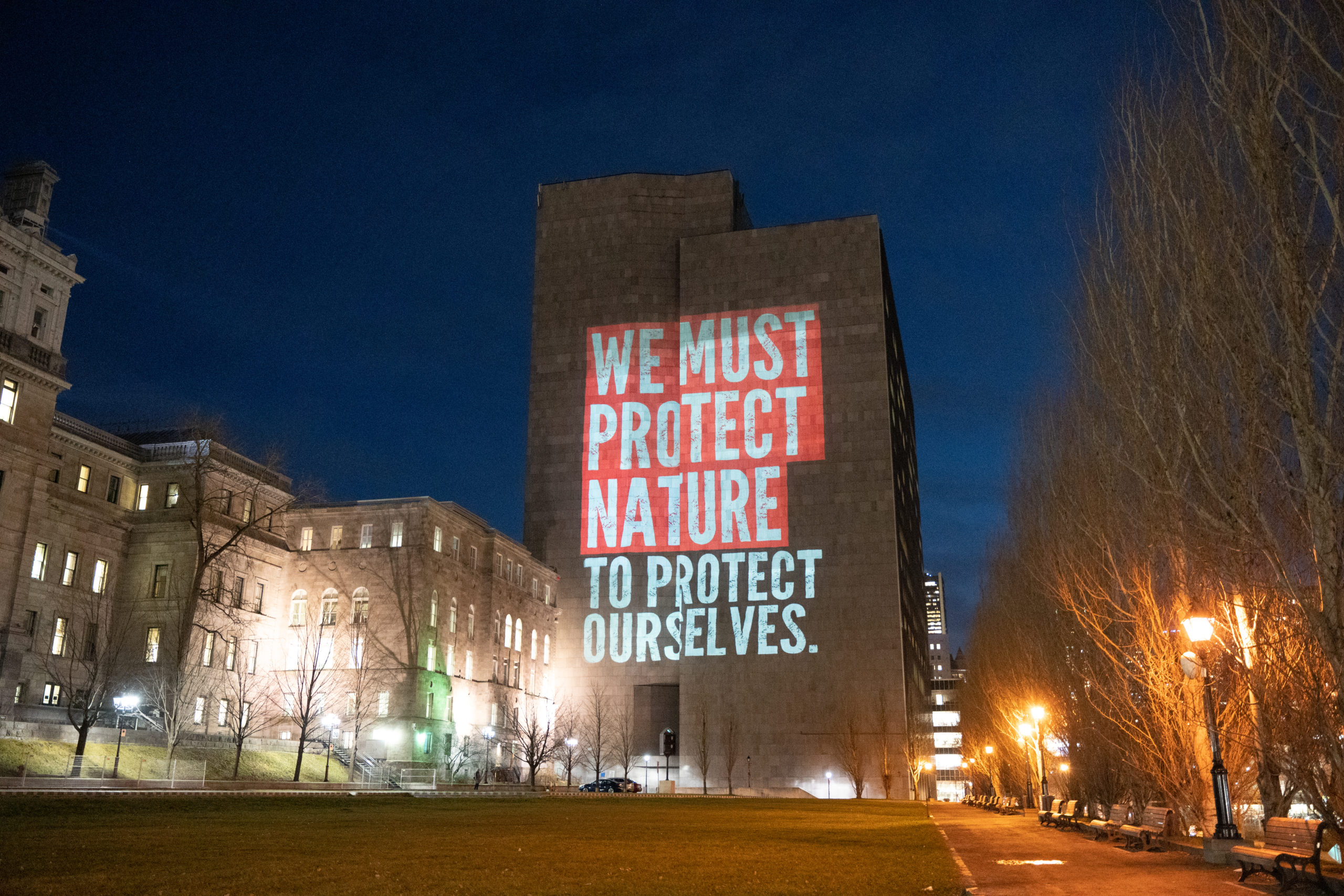We *are* nature: The world comes together as COP15 comes to a close in Montreal
The gavel fell, suddenly, at 3:33 a.m.
Inside a massive hall on the fifth floor of Montreal’s Palais des Congrès, on December 19, the last day of negotiations, more than a thousand exhausted delegates from nearly 200 countries attending the UN biodiversity summit (COP15) erupted into cheers, applause and tearful hugs.
The Kunming-Montreal Global Biodiversity Framework — an ambitious plan to protect and restore a third of the planet by 2030 — had just come into effect.

“There is no magic formula that allows us all to be completely happy,” COP15 president, Huang Runqiu’s English translator told the crowd. “[But] after four years of work, we have finally reached the end of our journey. We have in our hands a package which I think can guide us all to work together, to halt and reverse biodiversity loss, and to put biodiversity on the path to recovery for all people in the world.”
“We have taken a great step forward in history,” added Canadian environment minister, Steven Guilbeault, representing the host country after the conference relocated last minute from China following two years of pandemic delays.
Despite this lengthy gestation, the final week of negotiations came close to collapse, with the summit threatening to extend into a third week.
A flurry of activity on the final day suddenly made a deal seem imminent, with the closing plenary announced for 6 p.m., then 7:30 p.m., and then getting bumped in hourly increments until UN organizers went radio silent as the final negotiations stretched on and the hours ticked past.

A happy birthday song rang out in the plenary hall when the clock struck midnight, signalling a new day.
By 1 a.m. people started napping in nooks, hammocks and the benches beside the WWF jenga tower. Downstairs, a group kept their energy up past 2 a.m. by dancing the macarena in the Quebec pavilion. (Yes, really.)
Soon after, a new draft of the nature deal dropped, prompting hundreds to huddle in small groups over their laptops to pore over changes to annexes here, subparagraphs there. The major stumbling block throughout the high-level segment of the negotiations had been a dispute over resource mobilization for developing countries, with some saying developed nations had failed to contribute adequate financing.
Finally, shortly after 3 a.m., the crowd hushed as the speakers appeared on stage. Despite progress that roughly doubled the current funding baseline, the Democratic Republic of Congo again raised discontent in the last moments, threatening to break consensus.
Nonetheless, the historic deal passed. The commitment to halt and reverse nature loss by 2030 was absolutely essential, as was the commitment to halt the extinction of species. The 30×30 promise to protect 30 per cent of lands and waters also stayed despite some back and forth on whether to include inland waters and coastal waters in the final agreement. And while the included 30 per cent restoration target was not as high profile as the protection target, it is vital in areas that have experienced development and degradation.
And now the deal can start being improved upon. The concerns of the DRC and other developing nations are valid and addressing this remaining financing gap will be critical to how the Global Biodiversity Framework can be implemented .

Funding levels will also be key when it comes to Indigenous Peoples (read more here), with 80 per cent of the world’s biodiversity currently found in their territories. Proposals put forward by Indigenous groups were accepted in the final text, which was celebrated by the International Indigenous Forum on Biodiversity for its “strong language on respect for the rights of Indigenous Peoples and local communities,” including customary sustainable use, spatial planning, area-based conservation, free prior and informed consent, and respect for the United Nations Declaration on the Rights of Indigenous Peoples.
“Crucially, the results of COP15 in Montreal not only makes a strong commitment to halt and reverse nature loss by 2030, it does so with recognition of Indigenous Peoples’ rights, title, knowledge and stewardship,” said WWF-Canada’s president and CEO, Megan Leslie after the years-in-the-making deal was finally struck.
“Now this ambitious text must be turned into urgent action, and the hard work of implementation begins.

